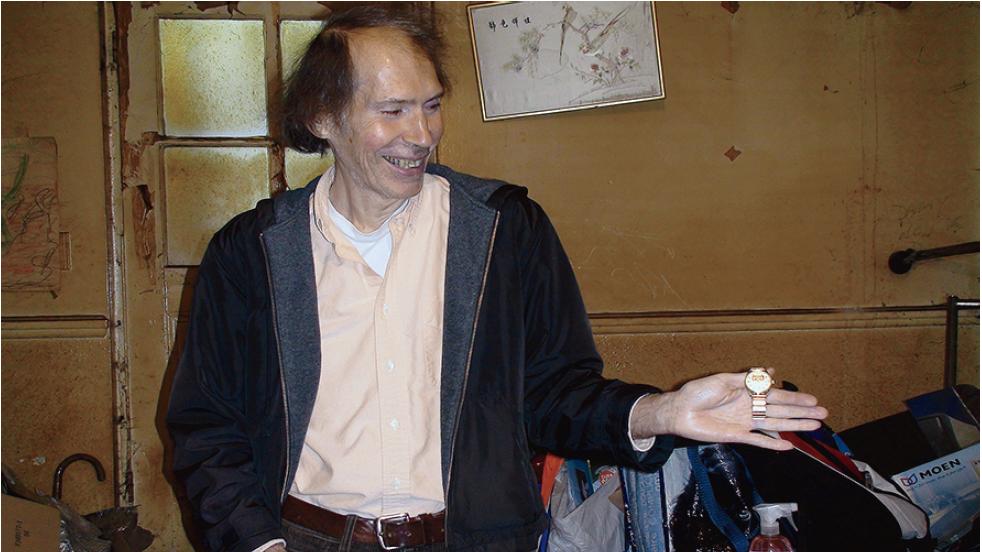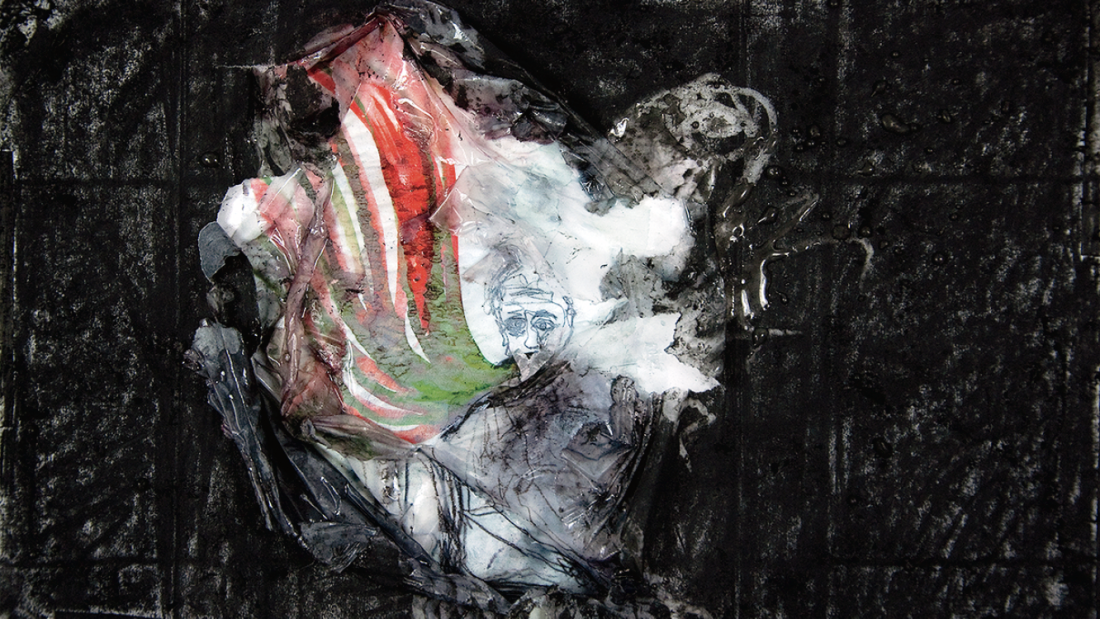Donigan Cumming
In Donigan Cumming’s Too Many Things, 2010, his most recent video, we have that invitation to the voyage, a passageway, entering into the weave of differing and converging worlds—an ever-turning hall of mirrors—brimming over with the magical and the enigmatic. Cityscapes, streets, a runner in a traffic tunnel, his breath growing more and more laboured, and then, all at once, the screen erupts and amid heightened voices bantering back and forth, we barge into an enormous thrift shop with its “superabundance of objects in continuous migration,” as Cumming notes, and into the embrace of “the club” as he describes them, a group of older characters who are just that. There are real characters—the regulars who meet here to take up their individual pursuits, ranging from computer technologies to gadgets and gismos of all kinds, and who, coming together to share their discoveries in a genuine, laugh-out-loud atmosphere, take Cumming, the new kid accepted into the fold, and toss him head first into the fray. All at once a crazed, yellow-spotted toy insect launches itself across the floor toward the camera, hits an obstacle, whirls about, then takes off in another direction, and among the wonders of the various and the many, we come upon an ungainly, robot-like hand massager with spinning, coloured lights. Here, Cumming is invited into the secrets: a two-page magazine spread, a monstrous alligator, all fine and well; however, there is that human hand dangling from its prehistoric jaws. And here, we delve into the treasure trove of the stories—“the determined rat” and “the invisible thief,” “Superman” leaping tall fences at a single bound and going through walls. “You will pass him on the street and you will not sense him.” And finally, paced to accentuate the mysteries, “everything you think he can’t do, he can do.”

Film still from Donigan Cumming’s Too Many Things, 2010, colour video, sound. 36 minutes. Image copyright of the artist. Courtesy of Video Data Bank, Chicago, and Vidéographe, Montreal.
Though repeatedly we depart for other shores, it is to the thrift shop that we return again, and again, as to a wellspring. In Too Many Things, animation sequences—transitions and reflections—appear for the first time in Cumming’s work. In the first, a background of black, textured paper and, with Cumming narrating a text of his beginnings—the shy photographer visiting without his camera shown the way, in a moment where “time stood still”—this background peels slowly back revealing drawings of disembodied and winged figures. In this as in other aspects of the video, earlier work is taken into changing perspectives.
Slow motion, a tracking shot of the thrift shop’s high ceiling and Cumming joining into an improbable narrative, a dream-like framing of memory where photographs are picked up by the one hand, described by the figure featured in that image, put down and another picked up, and this continuing, passing from hand to hand to hand. As images are faintly superimposed over the ceiling tracking shot—Cumming’s early photographs from the thrift shop, dolls legs and feet tangled together—increasingly we centre on the figure of Ross and, with a mundane image of a light fixture high up on a wall, hear the words, “Ross Loves Penney.” Straight away we cut to a room, to an aging, crinkled Polaroid of a young woman held up before the camera and Cumming asking, “Could I say you love Penney in the film?” But no matter whichever way he attempts to probe the nuances of this love, the man in the room with him remains reluctant to say much of anything.

Film still from Donigan Cumming’s Too Many Things, 2010, 36 minutes, colour video, sound. Image copyright of the artist. Courtesy of Video Data Bank, Chicago, and Vidéographe, Montreal.
Animations, returning to the wellspring of the thrift shop, but now we’ve had it. It’s the death-house comedy with the corpse long gone, but then, as the camera pans across a room piled high with heaps of discarded clothing and takes in strange pictures taped up on the walls, we hear the anxious voice of a woman we never see tell of the call to 911 and all the confusion that then flooded in. “It was like a movie!” she tells us, and saying, “They must have thought what kind of circus is this? What kind of nuts live here?” we learn of a detective taking her into the light to examine the bruising on her face. “Are you sure you two didn’t have some sort of altercation?” And all at once she rushes in, “passed out,” “the sink.” Bits and pieces patched together from goodness knows where, certainly leaving us to shake our heads in wonder.
As with all Cumming’s work, in Too Many Things we have a questioning of the ground of perspective, context and construct, played out upon the stage of the experiential; we have, at centre, the thrift shop, the wellspring, themes embedded in the stuff of life unfolding out and into those other regions; and we have Cumming, with his remarking upon “the fragility of human encounters,” where all things upon those shifting sands appear to pivot upon “time, preoccupation and pure chance.” ❚
Too Many Things, by Donigan Cumming, 2010. Distribution: Video Data Bank: Chicago, Illinois. Videographe: Montreal. 36 minutes.
Chester Pelkey is a critical and literary writer working out of Saskatoon.

